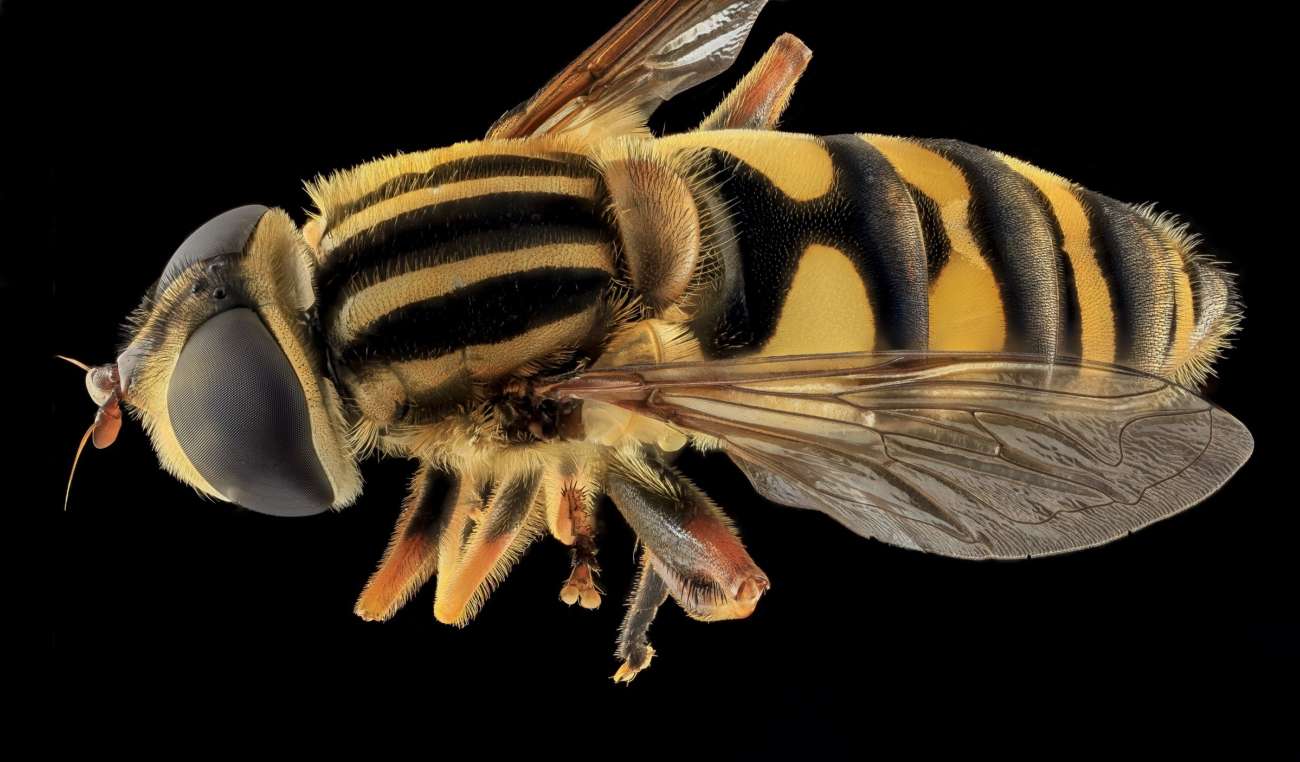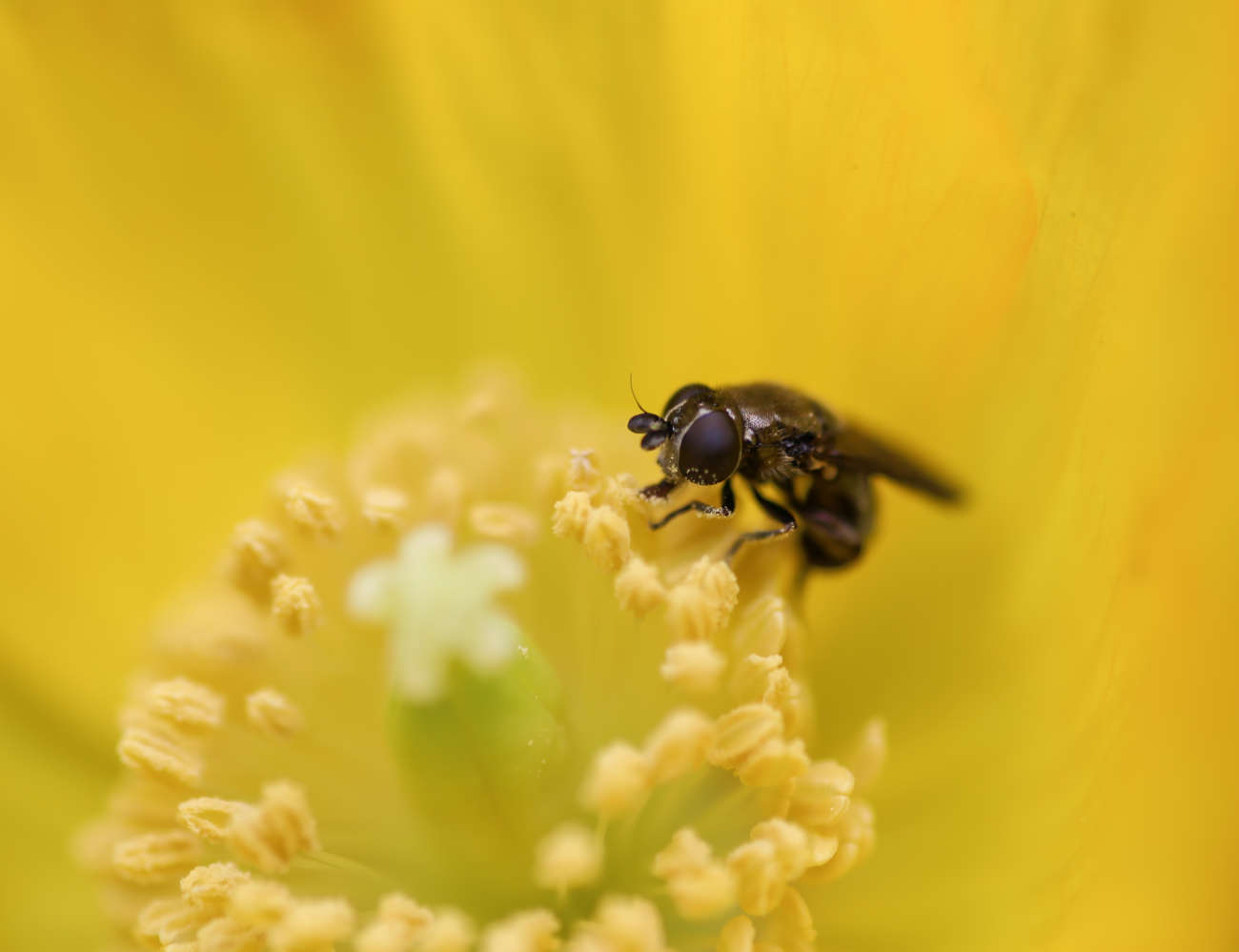Pollinator Profile: Flies
It may be hard to imagine why one would want to attract flies to the garden. However, flies are one of the most diverse group of pollinators. They include colourful flower flies and hover flies (Syrphidae), active bee flies (Bombyliidae), and tiny midges that visit many plant species. Like bees, flies are hairy and can easily transport pollen from flower to flower. Flies primarily pollinate small flowers that bloom under shade and in seasonally moist habitats, but are also economically important as pollinators for a range of annual and bulbous ornamental flowers. Plants pollinated by flies include the pawpaw (Asimina triloba), skunk cabbage (Symplocarpus foetidus), goldenrod (Solidago spp.), and members of the carrot family.

Hoverflies get their name from their amazing ability to use their strong and flexible wings to hover in one spot for extended periods of time. This defining ability can be used when feeding, and can also be used for mate selection. Similar to bees, hoverflies visit flowers to feed on nectar and pollen, and by doing so, transfer pollen between flowers using the little hairs found on their bodies. Not only are hoverflies important pollinators, they are also an efficient and natural from of pest control, and many species of hoverflies produce larvae that feed on destructive insects such as harmful sap-sucking aphids. By attracting and conserving hoverflies in agricultural systems, infestations of unwanted pests on crops can be significantly reduced naturally and effectively. With their pollination and pest control services, hoverflies help keep our native flowers blooming and our environment healthy.

While visiting flowers, hoverflies have a 'bee-like' appearance because of their yellow and black striped abdomens which mimic the colour patterns commonly found on bees. Unlike most bees, hoverflies do not have stingers and therefore use this mimicry as their main form of defense in order to ward off predators. To quickly identify a hoverfly from a bee, pay close attention to their wings, since hoverflies only have one set of wings whereas bees have two sets. Also, pay close attention to their eyes and antennae, since hoverflies have large fused eyes located on the front of the head with short and stubby antennae, whereas bees have longer antennae with eyes located at the sides of the head.